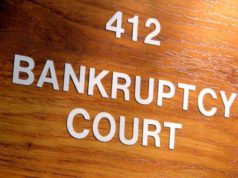
There is a litany of bankruptcy
forms that are recognized by United States Bankruptcy Courts.
However, of all the bankruptcy forms that exist, schedules,
especially for first-time applicants, have the potential to be among the most
easily understood.
Bankruptcy schedules are not “schedules” in the
sense that they plot out a series of events as they should transpire in
bankruptcy court. Rather, these bankruptcy forms are more like written
statements containing explanatory details relating to the debtor’s obligations.
As for what kinds of details are contained within, though, they tend to vary
with the type of schedule chosen.
Some notes on the filing of bankruptcy schedules with
bankruptcy court:
In all, there are ten main bankruptcy
forms concerning schedules with different purposes for the debtor.
Bankruptcy schedules B-6A through B-6C deal more or less with debtor
properties.
Schedule B-6A is specifically related to
“real property,” that is, property defined by the Department of
Justice “in which the debtor has any legal, equitable, or future interest,
including all property owned as a co-tenant, community property, or in which
the debtor has a life estate.” Within this document, applicants must list
where and what each holding is, why the debtor owns it, who shares ownership
(e.g. spouse), its value, and whether or not any exemptions
apply.
Bankruptcy forms are also in place for
recognition of all the debtor’s creditors. In fact, three distinct bankruptcy
schedules have been designated depending on the nature of the creditor’s
claims. One such schedule, Form B-6D, is designed for the enumeration of all
claims secured against a specific asset. Form B-6E, meanwhile, is concerned
specifically with unsecured priority claims (e.g. domestic support), and Form
B-6F with unsecured non-priority claims. Particular bankruptcy forms handle the
listing of unexpired executory contracts and leases, B-6G and co-debtors, those who have a shared
responsibility toward repayment.
Additionally, bankruptcy schedules apply for
explication of debtor’s income and expenditures. Schedule I, the Current Income
of Individual Debtor(s) form, requests details on all of the debtor’s
dependents, the debtor’s and his or her spouse’s occupation and employer, and
average monthly take-home pay. Schedule J, meanwhile, pertains to a
consideration of all possible expenses facing a debtor, including house
payments, utilities, food, medical fees, transportation, insurance, and taxes.
















